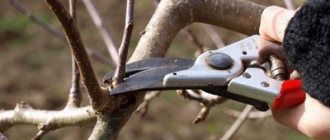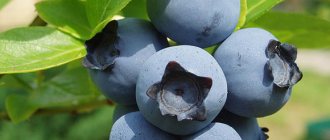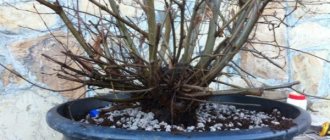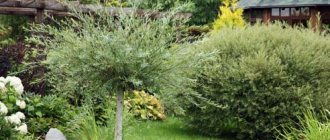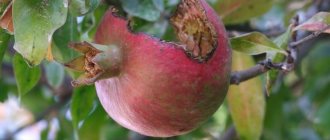Quince (Cydonia oblonga) – a fruit, the fruit of the common quince tree (also known as oblong quince). It is an ancient fruit native to various parts of Asia and the Mediterranean. It was grown in Ancient Greece and Ancient Rome.
Quince is grown in the Caucasus, Transcaucasia and Central Asia - it is quince from these regions that is most accessible to Russians
The concept of ordinary, oblong and garden
This culture belongs to the Rosaceae family .
In the wild, only one species of plant is found - the common or oblong quince (Cydonia oblonga). On its basis, two other groups were obtained, namely garden and ornamental. The first ones differ from each other in the shape of the fruit. It can be:
- pear-shaped;
- apple-shaped;
- ribbed
Decorative forms of culture are used for landscaping areas, personal plots, and parks. This type of quince can be marbled or pyramidal. Decorative forms are characterized by increased drought resistance and quickly recover after cutting and crown formation. They are not picky about soil composition and can easily tolerate polluted air.
Ornamental quince species also bear fruit, but in terms of taste they are significantly inferior to garden ones.
History of selection and appearance
When you first get acquainted with the culture, you get a feeling of its similarity to an apple tree, a pear tree, and a lemon tree. Based on this, one can make the assumption that it is a hybrid of these fruits, and this is wrong.
Quince is an independent culture; the first mentions of it appeared more than 4 thousand years ago . And many historians agree that she was the “golden apple” that grew in the biblical Eden on the tree of the Prohibition.
The Caucasus is considered the birthplace of the plant. It appeared in European countries in the 16th century.
Historical information
Since the times of Ancient Greece, the quince fruit has been identified with a symbol of love and fertility. According to legend, the lemon fruit, emitting a wonderful aroma, was presented by Paris to Aphrodite. Since then it has been referred to as the “golden apple” or “apple of discord.” In medieval Europe, giving this fruit meant confessing your feelings.
Initially, quince, along with rowan, pear, and apples, was classified as a member of the genus “Pear.” However, there were many differences between these fruits, which forced scientists to classify the fruit into a separate genus, “Japanese Pear.” It included the following types of quince: Chinese, evergreen, chaenomeles. Despite a number of common characteristics (hard pulp, a large number of seeds, a specific strong aroma, rocky structure), the plants had numerous differences.
Therefore, in 1822, each type of quince was isolated into a separate monotypic genus: Japanese (quince) - “Chaenomeles”, Chinese - “Pseudodocinia”, evergreen - “Docinia”.
Archaeologists have found that the tree that produces “golden apples” is one of the most ancient “habituated” plants. It has been established that the first cultivated plantings of quince appeared in Asia four thousand years ago. Since then, the fame of the aromatic fruit has spread across continents and countries. Today, quince is cultivated in forty countries around the world.
Areas allocated for quince planting:
- Türkiye – 9800 hectares;
- Uzbekistan – 7000 hectares;
- Argentina – 3200 hectares;
- Azerbaijan – 3100 hectares;
- Serbia – 2200 hectares;
- Algeria – 1800 hectares;
- Spain – 1400 hectares;
- Russia – 1000 hectares.
In addition, fruit-bearing trees can be found in Northern Iran, Latvia, Belarus, and Crimea.
The quince growing area is limited by average annual temperatures of +8..+9 degrees Celsius, with an absolute minimum of -15 degrees Celsius below zero.
What the plant looks like and botanical characteristics
Common and garden quince are deciduous trees with moderate vigor. Its height varies between 3.5-4 m. And the decorative form of the plant is a spreading shrub up to 1.5 m.
The quince tree has a spherical crown. The branches of the plant rise up obliquely. Young shoots are gray-green in color, densely covered with a felt edge. As they mature, the smooth bark becomes reddish-brown or black-brown in color. And on old branches and trunk it becomes a scaly, peeling dark gray. The diameter of the quince trunk reaches 50 cm.
In the photo there is a common quince:
Root system
The root system is branched, superficial type . It consists of many vertical and horizontal processes. The underground part of the plant deepens no more than 1 m, and the diameter of its growth can be significantly larger than the crown.
Leaves
Quince leaves are oblong-oval, with serration along the edges. The top of the plates can be pointed or blunt. The length of the leaves reaches 12 cm, and the width is about 7.5 cm. The plates are dark green on top, and grayish on the back side due to the felt edge.
Read more about quince leaves here.
Flowers
The flowering period of quince begins in May and lasts for 2-3 weeks. The buds are large; when fully opened, their diameter reaches 6 cm. The flowers are simple, the shade of the petals is white or pink , and there are bright yellow stamens in the center.
Quince buds open after the leaves bloom. Thanks to this, the crop does not suffer from recurrent spring frosts and bears fruit every year.
The flowers on the branches are located close to each other and it seems that they are clinging to the branches.
Read more about quince flowering here.
Fruit
Quince bears fruit in September-October. The fruits are edible, round or pear-shaped. During growth they are pubescent, but when ripe they become completely smooth. Quince fruits are bright yellow in color; some varieties may have a slight blush on the sunny side.
The pulp is hard and dry. The taste is tart, astringent, sweet and sour. In garden forms of the crop, the weight of the fruit ranges from 200 g to 2 kg, and in wild forms it does not exceed 100 g. Quince has a unique aroma, combining notes of apple, flowers and spices.
Full information about the fruits in this article.
Bones
There are five multi-seeded nests inside the fruit. The ossicles are obovate, irregularly angular. On top they are covered with a slimy shell. When the fruit ripens, the seeds become reddish-brown. The weight of 1 thousand seeds is 24-44 g.
Quince seeds contain a large amount of amygdalin glycoside and therefore smell like bitter almonds.
Varieties with photos
Thanks to selection, about 400 varieties of quince have appeared. The purpose of their breeding was to increase the winter hardiness of the plant, increase the size of the fruits and improve their taste.
Popular varieties of garden quince:
- Anzherskaya. Early ripening French variety with apple-like fruits. The harvest can be stored fresh for 2 months. The variety is characterized by increased resistance to fungal diseases.
- An excellent pupil. Quince was bred in the Nikitsky Botanical Garden. The yield of the variety is 45 kg annually when grown on nutritious soil and regular watering. The tree maintains high productivity for 27 years. Fresh fruits do not lose their consumer properties for 2.5 months.
- Crimean early . The variety does not tolerate transportation well. Its yield is 40 kg. The fruiting period begins at the end of September.
- Muscat . This quince easily adapts to any climatic conditions. It is undemanding to soil and easily tolerates drought. Fruit weight 250 g. Productivity 35-45 kg per tree.
- Kaunchi 10. The fruits are pear-shaped. Their weight varies between 200-400 g. The pulp is juicy, sweetish with sourness. The harvest ripens quickly in the first ten days of October. Its volume is 50-60 g. Fresh fruits are stored for up to 3 months.
Full information about quince varieties is here, and about varieties for growing in the Moscow region here.
References
- Postman, Joseph (2009). " Cydonia oblonga
: the underrated quince."
Arnoldia
.
67
(1):2–9. JSTOR 42955445. - "Cydonia oblonga Quince PFAF Plant Database". pfaf.org
. - Potter, D., et al. (2007). Phylogeny and classification of Rosaceae. Systematics and evolution of plants
. 266(1–2):5–43. [Referring to the subfamily called "Spiraeoideae"] - Daniel Zohary, Maria Hopf, Plant Domestication in the Old World: The Origin and Distribution of Cultivated Plants in Western Asia, Europe and the Nile Valley,
Oxford University Press, 2000 - RHS AZ Encyclopedia of Garden Plants
. United Kingdom: Dorling Kindersley. 2008. p. 1136. ISBN 978-1405332965. - Lauffenburger, Olivier (2006). "supurgilla". Hittite Grammar Homepage, Akkadian Dictionary
- via premiumwanadoo.com. - Maimonides (1967). "16". Mishnah Commentary on Tractate Uksin
(original Judeo-Arabic אלספרג׳ל (ed. Mossad HaRav Kook). Jerusalem. - Lyle, Kathy Letscher (2010) [2004]. The Complete Guide to Edible Wild Plants, Mushrooms, Fruits and Nuts: How to Find, Identify and Prepare Them (2nd ed.). Guilford, CN: FalconGuides. p. 110. ISBN 978-1-59921-887-8. OCLC 560560606.
- ↑
Theophrastus.
“Quince produces wild quince.” Request
. - Skinner, Marilyn B. (2003). "Carmina Battiada". Catullus in Verona: reading the Elegiac Libellus
. pp. 15ff. - ↑
Pliny the Elder. Natural History. P. xv.10.11. - Lacus Curtius. Apicius.
- ^ abcdefgh Carlton, Deb (April 25, 2013). Cumo, Christopher (ed.). Encyclopedia of Cultivated Plants: From Acacia to Zinnia [3 volumes]: From Acacia to Zinnia. ABC-CLIO. pp. 885–858. ISBN 978-1-59884-775-8.
- "Late blight of quince leaves". Royal Horticultural Society. 2016. Retrieved November 22 +2016.
- "Cedar-Quince Rust". RMissouri Botanical Garden. 2016. Retrieved November 22 +2016.
- ↑
Leighton 1986: 243. - Fearnley-Whittingstall, Hugh (7 October 2011). "Quince Recipes". The keeper
. - "Agroforestry news for quince cydonia oblonga". agroforestry.co.uk
. Archived from the original on October 6, 2006. - “Quince production in 2022; Crops/World Regions/Total Production by Lists". Food and Agriculture Organization of the United Nations Enterprise Statistical Database. 2018. Retrieved May 19, 2022.
- "Cydonia oblonga 'Vranja' Nenadovic". Royal Horticultural Society. Retrieved July 22, 2013.
- Online Database: National Germplasm Resource Laboratory. Beltsville, MD: USDA, ARS, National Genetic Resources Program. Germplasm Resource Information Network (GRIN). Retrieved February 20, 2011.
- "Quince". grass2000.com
. - Alexander, S. The Cook's Companion
. Penguin of Australia. item 609. - Jump up
↑ McGee, H. (2004).
About food and cooking
. Hodder and Stoughton. paragraph 357. - Jump up
↑ Wilson, C. Anne (1999).
The Book of Marmalade: Its Predecessors, Its History, and Its Role in the Modern World (together with a collection of marmalade recipes and marmalade cooking)
(revised ed.). Philadelphia: University of Pennsylvania Press. ISBN 0-8122-1727-6. - Harper, Douglas (2001). "Marmalade". Online dictionary of etymology
- at Dictionary.com. - Ferraz, Rafaela (December 5, 2018). "Why Portuguese marmalade has nothing in common with marmalade". Gastro Obscura
. Atlas Obscura. Retrieved December 8, 2022. - "Dunjevača izuzetne arome i ukusa" [Quince brandy of exceptional aroma and taste] (in Serbian). Poljoprivreda.info. November 22, 2003. Retrieved February 3, 2020.
- “Kako da direct kvalitetnu dunjevaču” [How to make quality quince] (in Serbian). Agropress. October 11, 2015. Retrieved February 3, 2022.
- Lawson, John (1709). A New Journey to Carolina
cited in Leighton, Ann (1986).
American Gardens in the 18th Century: "For Use or Pleasure"
. paragraph 242f. - ↑
Wikisource: Lives by Plutarch, translated by John Dryden: Solon
Where does it grow in Russia and other places?
In the wild, quince can be found in the Caucasus and Central Asia. It is cultivated on the Australian and American continents, in Europe, and Moldova. Quince prefers to grow on :
- edges;
- fellings;
- glades;
- slopes;
- near coastal reservoirs and even wetlands.
The wild form of the crop is not demanding on the composition of the soil, while garden quince prefers to grow in nutritious soil.
The tree shows high productivity on loams and heavy clay soils. But it is also possible to grow in sandy soil. However, with insufficient watering, the fruits become smaller. In Russia, this tree is cultivated in the Volga region and the Central Black Earth region.
Rules for growing and care
Growing quince does not cause difficulties even for novice gardeners.
But for its full development, it is necessary to comply with the requirements of the culture during planting and care. Quince can be planted in the spring before the tree’s growing season begins and in the fall after it ends. For culture, it is recommended to choose well-lit places on the south side of the site.
In this case, the groundwater level can be about 1 meter. It is possible to grow a tree even on sandy soil, since the plant is able to withstand drought. However, in this case, the yield will be lower and the fruit size will be smaller.
It is recommended to plant annual and biennial seedlings without signs of disease. When planting at the bottom of the hole, you need to place not drainage, but a layer of clay 10 cm thick. This will provide the plant with a sufficient amount of moisture even during dry periods. The seedling should not be buried in the soil; its root collar should be located at soil level.
After planting, the plant needs abundant regular watering for rapid adaptation. The plant needs to be fertilized three times per season. Fertilize for the first time in the spring during the active growing season, using organic matter. In the future, it is necessary to apply fertilizers before flowering and during the formation of the ovary. At this stage, it is recommended to use superphosphate and potassium sulfide.
Quince responds well to pruning. In early spring, you need to remove damaged and dry shoots, and also clear the tree of thickening branches. Until the seedling is five years old, the crown of the plant should be formed. The permissible number of skeletal branches is 6-8.
In late autumn, mulch 10-12 cm thick should be laid in the root circle of the tree to prevent freezing of the root system. To do this, you can use humus, peat, and pine litter. And with the arrival of spring, the mulch must be removed without waiting for steady heat, as it can cause the root collar to become warm.
At the end of summer, experienced gardeners recommend pinching the tops of young shoots so that they can ripen before winter.
Quince begins to bear fruit at the age of 3-4 years.
Read this article for more information.
Recipes for various diseases
Anemia, DIABETES Cut the quince into slices, remove the seeds, put it in a thermos and pour boiling water into the thermos in a ratio of 1:20. Leave for 2 hours. Take 1/2 cup 3 times a day (do not eat the fruits). Drink the infusion between meals. Take 1 tablespoon of dry chopped quince fruits and pour 1 glass of boiling water, leave for 20 minutes. Then put on fire and boil for 10 minutes, remove from heat and leave again for 30 minutes, strain. Take 1 tablespoon of the decoction before meals 3 times a day. DIARRHEA Pour 200 g of quince cut into slices (without removing the seeds) with 1 liter of water, put on fire, boil for 20 minutes. Take 1/2 cup of the decoction every hour until the diarrhea stops. REDUCED APPETITE, ENTEROCOLITIS, COLDS Pour 1 teaspoon of quince seeds into 1/2 cup of boiling water, leave for 2 hours, shaking occasionally. Strain without squeezing out the seeds. Take 1 tablespoon 3 times a day before meals. FRECKLES Grate ripe quince, squeeze out the juice through cheesecloth, mix it with honey and dry duckweed grass powder. Wipe your face if you have freckles. HAIR LOSS Pour 50 g of fresh and finely chopped quince leaves into 1 liter of water. Boil for 10 minutes, leave for 1 hour. Rinse cleanly washed hair. STOMATITIS Grind quince seeds, pour 1 cup of boiling water, leave for 2 hours. Rinse your mouth with infusion. ANAL CRACKS Squeeze the juice from quince fruits, heat it and make a poultice.
What methods of reproduction are used?
Quince is easily propagated by seed and vegetative methods. And if necessary, obtaining new crop seedlings will not pose any particular difficulties for the gardener.
Features of tree propagation in different ways:
- Seeds. It is recommended to collect seeds for sowing one month after harvesting the fruits. By this time, the seeds have ripened and acquired a uniform dark brown hue. They should be thoroughly washed to remove mucus and lightly dried.
Planting in the ground should be carried out at the end of October. In this case, the seeds will undergo natural stratification in winter and germinate with the arrival of spring warmth. Transfer seedlings to a permanent place at the age of 1.5-2 years.
- Root shoots . As the tree grows, young shoots appear at its base. Therefore, in early spring they can be separated with root shoots and transferred to a permanent place. This method gives 100% survival rate of plants. To quickly adapt, they need to constantly monitor soil moisture and regularly water as needed.
- Cuttings. This propagation method should be used if a large number of new quince seedlings are needed. To do this, cut young or woody shoots at the beginning of spring into pieces 15-25 cm long.
Each of them should have 4-5 vegetative buds. Make the upper cut straight and the lower cut obliquely to increase the rooting area. It is recommended to plant cuttings in a mixture of peat and sand, taken in equal quantities. Before planting, soak the shoots for a day in Kornevin’s solution. It is recommended to deepen the cuttings to the first bud.
And for their successful rooting, make a mini-greenhouse on top. After 1-1.5 months, the cuttings will have roots. Young seedlings are transplanted to a permanent place when they are strong enough.
Read more about reproduction here.
Quince diseases and pests
This crop is resistant to diseases and pests, but if the growing conditions are inappropriate, its immunity is reduced. In this case, only timely processing helps preserve the harvest.
Possible difficulties:
Moniliosis .
The disease develops in damp, cold, prolonged weather. The causative agent is the fungus monilia cinerea. Moniliosis is common in regions with temperate climates and affects stone fruit and pome crops.Fruit rot appears on leaves, inflorescences and fruits. For treatment, spray the crown and trunk of the tree with Bordeaux mixture.
- Powdery mildew. The disease develops at elevated temperatures and humidity. It can be recognized by a white coating on the leaves, which later becomes dirty brown.
It disrupts the process of photosynthesis. As a result, powdery rose causes premature leaf fall, which significantly weakens the tree. When the first alarming signs appear, it is necessary to spray the tree crown with Speed or Topaz.
- Rust . The disease can be recognized by orange bumps on the surface of the leaves and round pustules on their reverse side. Subsequently, the spots grow. As a result of the damage, the leaves fall off, which negatively affects the tree’s immunity. For treatment, spray the plant with copper sulfate.
- Aphid . This small insect feeds on the juice of the shoots of quince leaves, which slows down the process of their development. Aphids form entire colonies, causing serious damage to the plant. To destroy the pest, it is recommended to use the insecticide Iskra, Bi-58.
- Fruit mites . These small insects are difficult to see with the naked eye, but with mass reproduction, the development of the tree stops, small light dots appear on the leaves, the quince has a dejected appearance, and the tops of the young shoots are entwined with cobwebs. To destroy mites, you need to spray the crown with Actellik or Fitoverm.
- Apple codling moth . Damage to quince is caused by the voracious larvae of the pest. Brown butterflies begin their active years during the flowering period of the tree. 2-3 generations are hatched per season. Caterpillar larvae damage quince fruits from the inside. To combat it, it is recommended to use biological products: Lepidocid, Dendrobacillin, Bitoxibacillin.
Read more about diseases and pests here.
Benefits and harms
Quince has a rich chemical composition. It contains pectin compounds, organic acids, minerals, tannins and a complex of vitamins.
The main beneficial properties of quince:
- hemostatic;
- diuretic;
- astringent;
- antiseptic;
- antibacterial;
- antiviral.
This fruit is recommended for increased mental stress and regular stress, as it contains a large amount of natural antioxidants. This feature also makes it possible to slow down the aging process in the human body.
The calorie content of quince is 48 Kcal.
Despite the benefits of the fruit, in some cases it can cause harm to health.
Contraindications:
- individual intolerance;
- stomach ulcer;
- predisposition to constipation;
- pleurisy;
- enterocolitis.
The content of ascorbic acid in quince fruits is 5 times higher than in citrus fruits.
More information here.
Four Trumps
The first thing that catches your eye is the size of the fruit, which rarely weighs less than 500 grams, and sometimes reaches 4 kilograms. This is the absolute trump card of this fruit tree, since such heavyweights are not found among apples and pears. Interestingly, it is the large size of the light lemon fruit that attracts thieves to quince orchards. However, they immediately throw them away after eating. And all because the villains don’t even realize that the value of quince is in its magnificent, strong, persistent aroma, and not its taste. This is its second advantage.
Thanks to this feature, quince is used in cooking to add characteristic bittersweet notes to compote, preserves, jams, and baked goods.
The third trump card of the unusual-tasting fruit is its high biological value. The peel and pulp of quince are rich in nutrients: vitamins, macro- and microelements, organic acids, pectin substances, saccharides. They supply the body with useful compounds and remove harmful heavy metals: uranium, zinc, lead.
Interestingly, the effect of the boiled product is 2–3 times stronger than the fresh one.
The fourth trump card of quince is the possibility of grafting a pear. This improves the taste and color of the fruit and makes it possible to get two fruits from one tree.
Methods of application
This fruit is widely used in cooking. Jams, preserves, candied fruits, juices, and drinks are prepared on its basis. Also, shaggy quince is a raw material for marmalade, due to its pectin content.
Dessert recipe:
Cut 1 kg of quince into slices and add 2 tbsp. water.- Boil over low heat until the fruits soften.
- Rub the fruit mixture through a sieve.
- Add 0.5 kg of sugar, cook over low heat for half an hour.
- Pour the hot mixture onto a baking sheet lined with parchment.
- After cooling, cut into pieces and sprinkle with powdered sugar.
In medicine, quince is used as an effective remedy for stopping bleeding, treating diarrhea and vomiting. In dentistry, decoctions based on leaves and fruits are used for gum inflammation. These fruits also help in the treatment of anemia, anemia, and edema.
Quince is also in demand in cosmetology. It is the main ingredient for anti-aging masks.
Learn more about using the plant here.
Application in landscape design
Landscape designers were able to appreciate the spectacular appearance of the plant during flowering. Therefore, the culture is widely used to decorate the background of gardens, parks, squares and alleys.
Quince goes well with :
- rosehip;
- honeysuckle;
- jasmine
Weigela, paniculate hydrangea, looks good against it. When choosing neighbors, it is recommended to take into account the light-loving nature of the culture. Therefore, tall trees cannot be planted next to quince.
Advantages and disadvantages
This plant, like others, has strengths and weaknesses. And if you want to grow it on your personal plot, you need to study them in advance.
The main advantages of quince:
precociousness;- undemanding to soil composition;
- high life potential;
- decorativeness;
- resistance to drought, stagnation of moisture in the soil;
- versatility of fruit use;
- long-term storage of fresh fruits;
- medium height of the tree.
Flaws:
- thermophilicity;
- sensitivity to low light;
- tart astringent taste.
Taxonomy
Four other species formerly included in the genus Cydonia
, are now treated as separate genera.
These are Pseudocydonia sinensis
and three flowering quinces of eastern Asia in the genus
Chaenomeles
. Another unrelated fruit, bael, is sometimes called "Bengal quince".
The modern name arose in the 14th century as the plural of quin
, via Old French
cooin
from Latin
cotoneum malum
/
cydonium malum
, ultimately from Greek κυδώνιον μῆλον,
kydonion melon
"Kidonian apple".
Cydonia
It is included in the subfamily Amygdaloideae. [3]
What does the tree look like?
There are several trees and fruits that are similar to the common quince. And in order to be able to distinguish them, you need to know the characteristics of these plants.
Among them:
- Medlar. A medium-sized deciduous tree 2.5-4 m high. It is a representative of the Rosaceae family. The fruits are flattened and round in shape and ripen in October. The diameter of the fruit is about 5 cm, the color is yellow-brown.
The taste is tart and astringent, so it is recommended to harvest after the first frost. German medlar helps in the treatment of hypertension, asthma, and diabetes.
- Chaenomeles . This crop is also called Japanese quince. It is a spreading shrub, up to 2.5 m high. It is highly decorative and is used as an element of landscape design. The fruits are small and resemble quince in appearance. The taste is sour, so the fruit is only suitable for processing. Chaenomeles flowers appear before the leaves bloom.
Cultural associations
- In "El licenciado Vidriera" by Miguel de Cervantes, the protagonist, after eating a poisoned quince, becomes deluded that he is made of glass.
- In Turkey, the expression ayvayı yemek
(literally "to eat quince") is used as a derogatory term indicating any unpleasant situation or malicious incident that should be avoided. This use can be compared to the bitter aftertaste of quince in the mouth. - When a child is born in the Balkans, quinces are planted as a symbol of fertility, love and life. [13]
- Ancient Greek poets (such as Ibicus and Aristophanes) used quince ( cydonia
) as a mildly crude term for teenage breasts. - In Plutarch's Lives, Solon is said to have decreed that "the bride and groom should be locked in a cell, and eat quinces together." [31]
- In the Simpsons
"Who Shot Mr. Burns?" (Part One)" Homer sends Mr. Burns a box of chocolates with a family photo at the bottom. Burns and Smithers avoid the sour quince log, leaving Homer's face hidden in the photograph. - English poet Christina Rossetti's 19th-century poem Goblin Market mentions quince in its opening lines, listing a variety of fruits.

